
Not in a million years would I have ever watched a talk from a conference. In my past life before I was a student, I attended many conferences as part of the Hire a Hubby franchise, no, it’s not what you think, it was actually a handyman franchise and I do remember conferences fondly but mainly for the social interaction rather than learning anything new. But! But!! My tune has been changed, my eyes have been opened and even though watching these videos from the GDC Vault are part of my study, I have grown to enjoy them and to value them. After all these are experts in their field and are a success at what they do, so I would be mad not to sit up and take note. Not having a bar nearby is also a huge step in the right direction.
The video I was directed to watch is real gem from Scott Rogers speaking on “Everything I learned about level design, I learned from Disneyland.
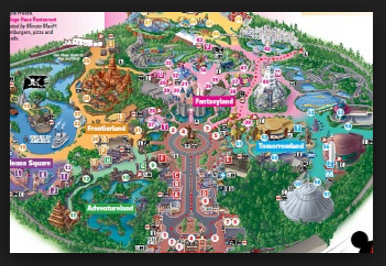
In my notes and ramblings about this video I will sometimes refer to the player as guest or visitor because after a marathon of studying my brain is starting to fizzle and frazzle, so bear with me please kind peeps.
I like how Scott Rogers talks about the rides, especially Haunted Mansion

and how it was almost like a first person shooter with the same restrictive view. Whenever I go on these rides myself, I imagine them as a game and think of how I could replicate the experience in a game. how I could I always have liked the games that give me that sinking feeling in my stomach the same as on a ride going down the steep slope. The use of the first person view in those games captured my attention enough that I was able to physically feel something.
Scott asks himself the following question when he starts designing a game and levels.
What would Walt Disney do?

Story first = Beginning, middle and end. The story guides the level design.
Explore themes = What is the story about? What is the moral angle of the tale or what do you want the player to learn or to do?
Pre – visuals = The drawings story boards, models and simulations.
Start at the top and work down = start with the story the big picture – World, then bring it down to the Land/Level, then down to ride/game experience
Start with your own interests when designing games. You will be more familiar with your materials and ideas. Disneyland was designed based on Walt Disney’s interests and loves. Walt Disney needed a way to get people to want to go around and explore his park. To do this he came up with what he called were Weenies. Weenies are landmarks that catch the person’s eye and to get them to want to travel to that spot. On the way they experience other elements and attractions of the land. Likewise in a game a Weenie:
- Attracts the players eye. The Forerunner Signal tower in Halo gave a glimpse of what was to come and the player was reminded visually by a blast of light into space every so often.
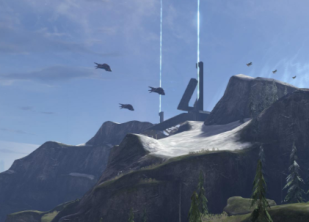
A Weenie or focal point on Halo
- Provides a navigational reference or waypoint.
- Wets the players appetite in anticipation of what is to come.
- Gives the player choices of long and short term goals.
- Provides opportunities for ‘big moments’, ie boss battles, cut scenes etc.
As the player explores or progresses, more Weenies are revealed to attract the player’s eye. I must admit that if I think about it, the best theme parks I have been to use this method to get people around the attractions. It also gives the visitors a choice to visit certain attraction or skip them based on their goals.
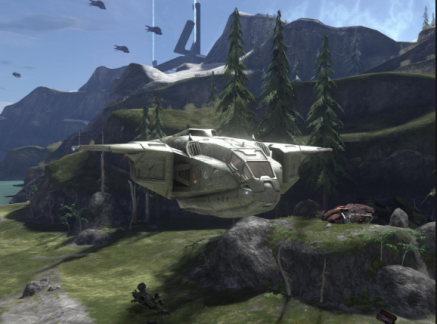
Enhance the Weenies, make them stand out by placing things in front that direct and draw the player towards the goal. Change the view as a different viewpoint for the player can enhance the scale or drama. Make the player backtrack or change direction to find more information.
Use lighting to draw eyes to the goal. At 9.30pm every night the rest of Disneyland is pretty much dark but the main castle is well lit along with all the lights down the main street. This is done to trigger a reaction in all the visitors as well as showing them which way to exit the park. The absence of light discourages a player from exploring that area. It’s too dark to see anything, what is the point?

As Disneyland uses posters of their attractions to show the visitor what is available and what can occur likewise a map or something (a screen showing the characters available and which ones are locked as in Mortal Kombat) could give the player a sense of direction, goals and what to possibly expect.
Paths versus Exploration. Disneyland has its main paths but as you explore, the visitor discovers other paths and shortcuts to other areas and attractions, these paths also open up more attractions along the way. The player can be restricted to a fairly linear path in the game without it being obvious or boring by including little pathways or ‘fingers’ where the player can explore or feel smart as they have found a shortcut or a new area. Allow a lot of freedom in the path, the player may be going to the same spot all the time but if they have a wider environment to go through it gives them a sense of freedom and choice. If the path cannot be wide, the player can be distracted along the way by what is on the sides of the path, like a vista view of the world or level. The player could also be given the option of a quicker way through but also may be rewarded if they take time to explore the area being bypassed. Remember to also to sometimes just reward the player with a ‘fun’ experience, it’s not always about the treasure.
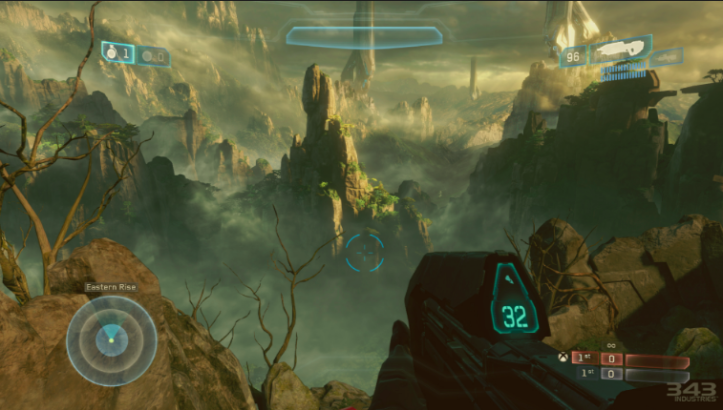
Thematic Levels
The levels should have a theme such as:
- survival/escape, where the player must survive and or escape the level, and may have a time limit.
- Exploration, where the player has the time to explore and look around at their own pace.
- Education, where the player is taught something, not necessarily something about the real world, but the game world.
- Moral lesson, what is the lesson the player learns from playing the level or the message the designer wanted to get across.
Like Disneyland has a main street which is usually deemed boring compared to the rest of the park, but actually provides the visitor with a place to relax, to recharge and to re-orientate. It is a safe place, where the visitor can take their time and explore more or rest before moving on. This can be replicated in a game by using a city or building where the player is safe and can explore, upgrade and purchase items or assets. Some examples are The Tower in Destiny and Safehouse in GTA 5.
Level items – use players expectations as a springboard. Populate the level with items that give the player the feeling and looks that would belong in that level/area. For example, in a game about cowboys, one would have items such as tumbleweeds, cactus, horses etc etc. The designer could then also turn expectations completely around providing it is still following the theme and story.
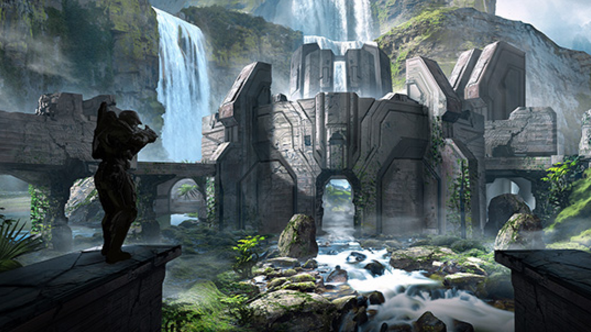
Also consider how the item will react with the player, what sounds would it make when struck or can it be broken? There should also be some common items that match the overall theme but are customized for the individual level.
Illusionary narrative is the use of your assets over again but to convey a different meaning or area. The asset can help with continuation of your story in the design such as trees decaying from radiation over time. It shows clearly to the player the cause and effect without costly animation. It uses less assets and space which adds to the cost of development but be mindful of the players or the camera’s ability to backtrack. It works well where the story is more in control of what path the player takes.
Add danger to the level to give the player a sense of excitement and urgency. Players love to feel in danger even while knowing that they are safe. The backgrounds or the edges of the path could have some dangerous element such as a very real element of a cliff where one would die if they fell off, or an unreal element such as background animation of lava exploding but doesn’t effect the player.
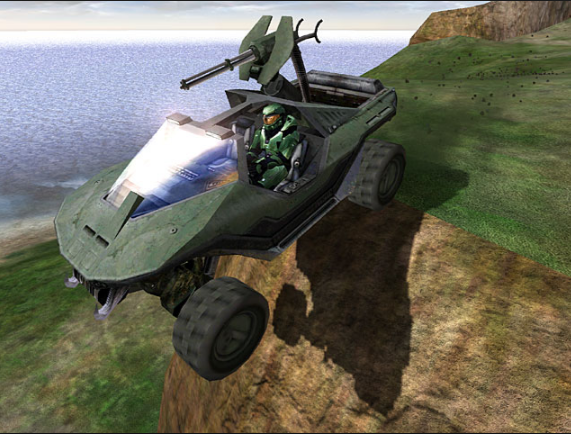
These add to the atmosphere and create an element of foreboding and danger. These elements serve as warnings or implied threats of what is to come. Just don’t overdo it so as the player starts to ignore it.
In all I found this talk very entertaining, informative and relative to everything we have talked about in lectures. The video was about designing a level and everything Scott spoke about we have covered individually in class. From architecture, to focal points to narrative and story was nicely covered and rounded of in this one talk with practical examples. There are many many different ideas and principles i have picked up from this talk as well as it has confirmed a few I already had so that is also a nice bonus.
Well that’s it for now, my apologies for the length but as I stated earlier, this talk was a gem and a fountain of practical information. I look forward to bringing you more interesting talks from the GDC Vault.


Thanks for the thoughtful review of my talk! I’m glad you enjoyed it!
LikeLike